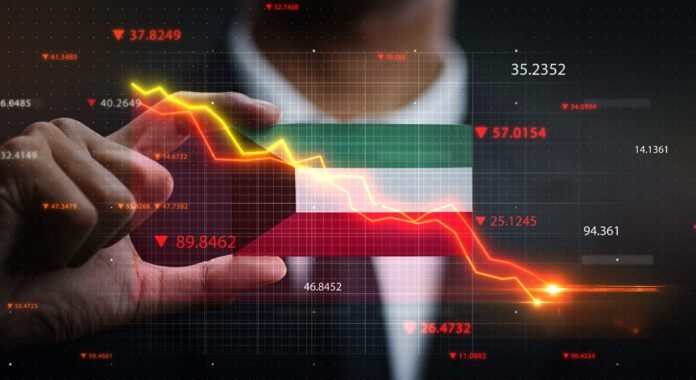Kuwait’s economic outlook for 2025-2026 is set to remain broadly positive, with GDP projected to expand by 3.3% by 2026. This growth comes after years of below-trend performance, largely attributed to OPEC+ production cuts and the waning impact of post-pandemic consumer spending. However, despite global economic uncertainties, Kuwait’s economic growth is expected to stabilize, driven by strategic investments and reform measures.
Oil Sector Recovery and Non-Oil Expansion
Kuwait’s oil sector is projected to grow by 2.4% per year during 2025-2026, aligning with the anticipated increase in crude output. Production is expected to reach 2.54 million barrels per day by 2026, following the unwinding of OPEC+ voluntary cuts starting in April 2025. Non-oil growth is also expected to average 2.8% per year, supported by steady consumer spending and a rebound in corporate activity.
High-frequency indicators suggest that this growth momentum is already taking shape. In the final quarter of 2024, the Purchasing Managers’ Index (PMI) recorded its highest reading ever, reflecting robust economic activity. Additionally, bank lending to corporates grew by 4.9% year-on-year in February, the fastest pace in over two years. Project awards in 2024 also hit a seven-year high, amounting to KD 2.8 billion, driven by strategic initiatives under Vision 2035 in energy, water, housing, and transportation.
Reform Progress and Legislative Moves
Kuwait’s government is making strides in its legislative and reform agenda. Key measures introduced over the past six months include:
- Uncapping of government service fees
- 15% top-up tax on multinationals
- Streamlined regulations for SMEs
- Approval of the long-awaited public debt law
- Imminent housing finance law aimed at addressing the housing shortage
These reforms are critical to achieving Vision 2035 goals, which emphasize economic diversification and infrastructure development. Efforts are also underway to restructure Kuwait’s economy to rely less on oil and more on sustainable growth sectors. Inflation, which peaked at 4.0% in 2022, has moderated to 2.4% as of March and is projected to stabilize at 2.5% on average for 2025-2026. Kuwait’s Central Bank is expected to gradually lower interest rates, reflecting a cautious approach compared to the US Federal Reserve.
On the revenue front, the government expects 0.8% of GDP per year from new measures such as the multinational tax, increased government service fees, and penalties. Potential excise duties in 2026 (0.4% of GDP) and VAT (up to 2% of GDP) are also under consideration. The new debt law passed in March 2025 provides vital flexibility for deficit financing and eases pressure on Kuwait’s reserves. Even with expected local and foreign currency debt issuance, Kuwait’s debt levels would remain among the lowest globally.
Risks and Opportunities
Kuwait’s economic stability faces potential risks from lower oil prices, regional geopolitical tensions, and deteriorating global trade relations. However, the rollout of Kuwait’s government work agenda could boost investment and growth prospects. The anticipated housing law could particularly drive residential investments and economic activity. Additionally, successful fiscal consolidation could potentially lead to a sovereign ratings upgrade, enhancing Kuwait’s economic standing.
Vision 2035 remains a cornerstone of Kuwait’s development strategy, promising significant growth in infrastructure, housing, and sustainable energy. If executed effectively, these initiatives could position Kuwait as a leading economic force in the region, ensuring long-term stability and growth.


